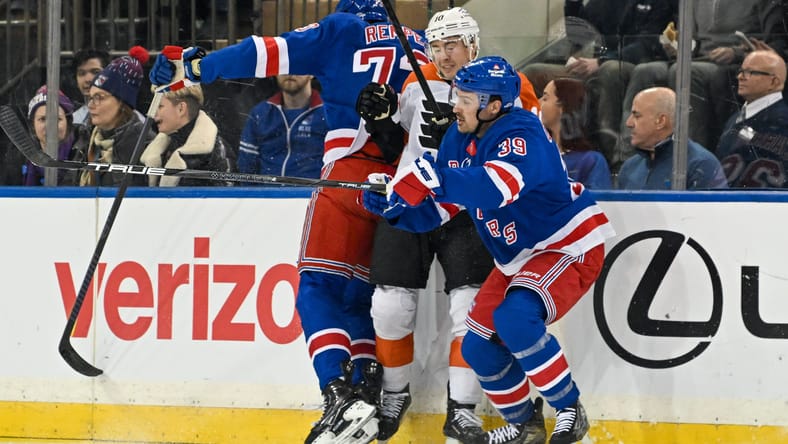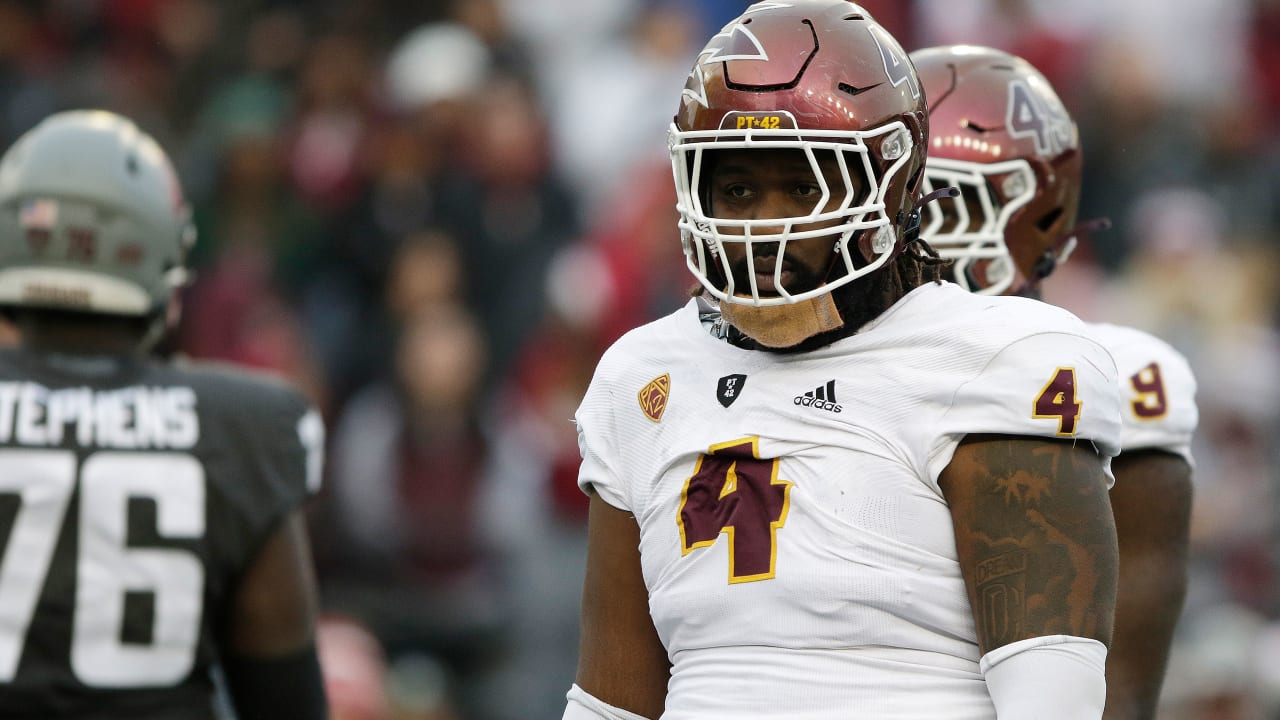When the New York Rangers hired Mike Sullivan this offseason, they didn’t just bring in a great tactical mind and two-time Stanley Cup winner. They hired a coach known for building team identity.

Of course, that may seem an easy thing to do when Sidney Crosby is at the heart of your team, as the superstar center was during Sullivan’s 10-year run as coach of the Pittsburgh Penguins. But during their best years, Sullivan built a team identity outside of Crosby and his star teammates, Evgeni Malkin and Kris Letang, that made the Penguins an all-around force for several seasons.
With the Rangers, Sullivan will also rely on star power, with the likes of Igor Shesterkin, Artemi Panarin and Adam Fox. But he has the option to create a different identity with the Rangers by building from the bottom up.
That starts with, what should be, the fourth line of Matt Rempe, Sam Carrick and Adam Edstrom.
The threesome isn’t just another checking line. They’re a potential throwback to hockey’s most punishing trios. Could they become the Rangers’ answer to the legendary “Crash Line,” a group that helped the New Jersey Devils bulldoze their way to their first Stanley Cup championship in 1995?
The way the game is played has changed quite a bit in the 30 years since Randy McKay, Bobby Holik and Mike Peluso were difference-makers in New Jersey’s bottom-six forward group. There’s not nearly the same amount of fighting; it’s more of a skating league now.
But the “Crash Line” didn’t just fight, check and kill time — they imposed their will, setting the tone physically while still contributing offensively.
Look no further than the two-time defending Stanley Cup champion Florida Panthers to see how important it is to have big, tough, punishing forwards who contribute at both ends of the rink.
An argument can be made that Rempe, Carrick and Edstrom could have the same positive effect on the Rangers next season and beyond.
Rangers 4th Line: Size, snarl, skill

Matt Rempe
Age: 23
Height/Weight: 6-foot-9, 255 pounds
2024–25 Stats: 42 games played, 3 goals, 5 assists, 8 points, plus-7 rating, 67 penalty minutes
Contract: First season of a two-year, $1.95 million deal ($975,000 AAV)
Rempe brings something the Rangers haven’t had since the days of Colton Orr — a true enforcer who’s a good skater and can contribute offensively. Leading the team in hits per 60 minutes (19.64) last season, Rempe sets a punishing tone every time he steps on the ice, and is an imposing towering presence. It appears he’s finally figured out how to keep his body and emotions in check after a pair of lengthy suspensions for reckless hits. If he earns a regular spot in the bottom six next season, Rempe can be a game-changer and focal point of a new Rangers identity.
Adam Edström
Age: 24 (turns 25 on Oct. 12)
Height/Weight: 6-foot-7, 241 pounds
2024–25 Stats: 51 games played, 5 goals (2 game-winners), 4 assists, 9 points, minus-5 rating, 27 penalty minutes
Contract: First season of a two-year, $1.95 million deal ($975,000 AAV)
The other half of the Twin Towers on this line, Edstrom played the first 51 games last season before a lower-body injury sidelined him the rest of the way. Edström is still developing, but has already proven to be a useful two-way player, who’s a solid penalty-killer, as well. He skates really well, his size makes him difficult to handle along the boards, and his scoring touch suggests a ceiling of 10–15 goals per season. Edstrom’s not as tough as Rempe, but as he showed against Jack McBain of Utah last season, he can hold his own when the gloves are dropped.
Sam Carrick
Age: 33
Height/Weight: 6-foot, 202 pounds
2024–25 Stats: 80 games played, 6 goals, 14 assists, 20 points, plus-5 rating, 112 hits, 58 penalty minutes
Contract: Second season of a three-year, $3 million deal ($1 million AAV)
Carrick is the veteran glue in the middle. The center is reliable on draws, leads by example, and doesn’t shy away from the physical game. His leadership and defensive awareness give this line its structure.
Together, Rempe, Edström, and Carrick form a group that could change the complexion of the Rangers’ bottom six. In a league dominated by speed and finesse, they represent a hard-nosed, grind-it-out style that can wear down the opposition.
‘Crash Line’ blueprint is one that Rangers can follow
The “Crash Line” took shape in the 1993-94 season when Peluso arrived in New Jersey after playing for the Chicago Blackhawks and Ottawa Senators. You may remember that he, Holik and McKay were a pain in the ass for the Rangers in the epic Eastern Conference Final in 1994.
They were even more effective the lockout-shortened 1995 season and during the Devils’ championship run that spring. Not only were Holik and his linemates physically wearing down opponents, the trio combined for 13 goals and 23 points in the 1995 Stanley Cup Playoffs. They were a massive reason the Devils were so dominant in the postseason and swept the Detroit Red Wings in the Stanley Cup Final.
McKay was the smallest player on the “Crash Line,” standing 6-foot-2 and weighing 210 pounds. Peluso was 6-foot-4, 225 pounds; Holik was 6-foot-4, 230. Each recorded over 1,400 penalty minutes in his career, with Peluso topping out at 1,951.
Holik, who later played for the Rangers, scored 326 goals in 1,314 NHL games and is a two-time Stanley Cup champion. No one on the Rangers’ ‘current fourth line matches his pedigree — Holik was more of a middle-six center than a true fourth-liner.
But when it comes to toughness, size, skill, and ability alter momentum in games, the threesome of Rempe, Edstrom and Carrick has the potential to be a modern-day “Crash Line,” though no one here is predicting Stanley Cup titles for the Rangers just yet. Rempe, Edstrom and Carrick all have much to prove, individually and collectively.
However, one can dream, and certainly the building blocks are in place should Sullivan choose to use this trio and let them grow together.
The Rangers might not just have a gritty checking line on their hands, they could have the NHL’s next great identity line. In a city that values work ethic and toughness, this trio could become a fan favorite — and a nightmare for opponents.
/cdn.vox-cdn.com/uploads/chorus_image/image/74189659/2192885541.0.jpg)


-1754207646-q80.webp)